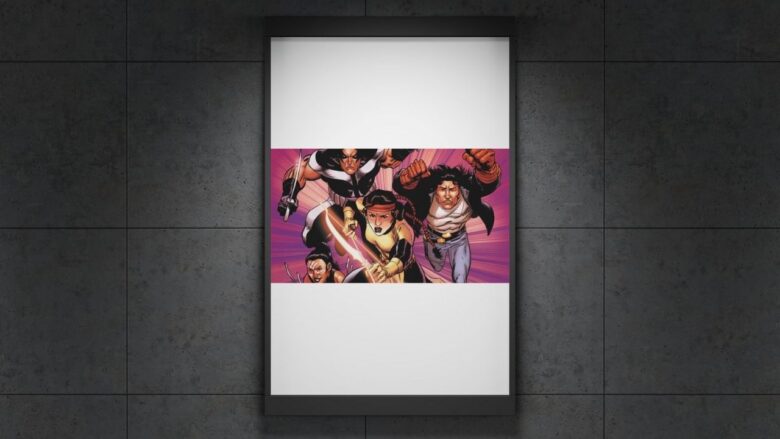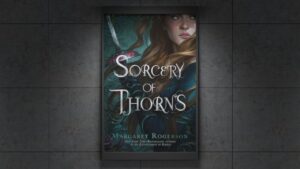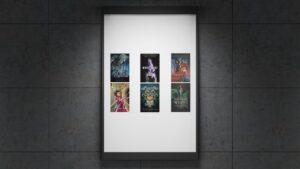Fantasy literature has long been celebrated for its ability to imagine new worlds and diverse cultures. However, despite its creative potential, the genre has often fallen short in representing the full spectrum of identities, particularly those at the intersection of marginalized communities. Indigenous LGBTQIA+ characters remain significantly underrepresented in fantasy, a gap that reflects broader issues of erasure and invisibility in mainstream media.
Highlighting Indigenous LGBTQIA+ characters in fantasy is essential not only for fostering inclusivity but also for enriching the genre with authentic stories that blend cultural heritage with queer experiences. These narratives offer unique perspectives rooted in traditions, spirituality, and resilience, providing readers with a deeper understanding of both Indigenous and LGBTQIA+ identities.
This article aims to guide readers toward inclusive fantasy stories that center Indigenous LGBTQIA+ characters. By exploring key themes, historical context, and offering carefully selected recommendations, we hope to support readers in discovering impactful works that celebrate diversity and challenge stereotypes within the fantasy genre.
Understanding the Intersection: Indigenous and LGBTQIA+ Identities in Fantasy
Indigenous identity encompasses the diverse cultures, languages, histories, and traditions of the original peoples of a region. In storytelling, Indigenous perspectives are deeply connected to land, community, spirituality, and ancestral knowledge. These cultural elements are vital to authentic representation because they shape how Indigenous characters understand themselves and their world. When Indigenous voices are accurately included in fantasy literature, they offer a rich cultural context that goes beyond superficial portrayals or stereotypes.
LGBTQIA+ identities represent a broad spectrum of sexual orientations, gender identities, and expressions. In literature, LGBTQIA+ characters often face challenges such as invisibility, tokenism, or misrepresentation. These issues can be even more pronounced in genres like fantasy, where queer identities are sometimes ignored or framed through limiting tropes. Including LGBTQIA+ characters in meaningful ways helps to normalize diverse identities and provides representation for readers who may see themselves reflected in these stories for the first time.
The intersection of Indigenous and LGBTQIA+ identities creates a unique space within fantasy that highlights complex experiences of identity, belonging, and resilience. Indigenous LGBTQIA+ individuals often navigate dual marginalization — facing challenges related to both their cultural background and their queer identity. This intersectionality matters in fantasy because it allows for the exploration of nuanced characters and stories that challenge dominant narratives. Incorporating these voices not only diversifies the genre but also promotes empathy and understanding across different communities, enriching the imaginative possibilities that fantasy offers.
Historical Context and Lack of Representation
The history of mainstream fantasy literature reveals a consistent pattern of erasure and marginalization when it comes to Indigenous and queer voices. For decades, Indigenous peoples and LGBTQIA+ individuals were either absent or misrepresented in fantasy worlds, reflecting broader societal exclusions. This exclusion is rooted in colonial histories and cultural biases that have shaped which stories are told and who gets to tell them.
Indigenous characters in fantasy have often been relegated to simplistic roles or depicted through harmful stereotypes, such as the “noble savage” or mystical guide. Similarly, LGBTQIA+ characters have frequently been sidelined, portrayed as tragic figures, villains, or tokenized side characters. When Indigenous and queer identities intersect, these misrepresentations multiply. Indigenous LGBTQIA+ characters, if present at all, have been subjected to reductive tropes like the “magical queer shaman” or the hypersexualized “two-spirit” caricature. Such portrayals strip these identities of their full humanity and cultural specificity.
The lack of authentic representation has a significant impact on both readers and communities. For Indigenous LGBTQIA+ readers, the absence of relatable characters can reinforce feelings of isolation and invisibility, limiting opportunities for identity affirmation and empowerment. For the broader audience, this invisibility perpetuates ignorance and misunderstanding, hindering cultural appreciation and respect. Addressing these gaps is crucial to creating more inclusive fantasy literature that reflects the diverse realities of all readers.
Key Themes Explored in Indigenous LGBTQIA+ Fantasy Stories
Indigenous LGBTQIA+ fantasy stories often center around themes that reflect the unique cultural and identity experiences of these communities, enriching the genre with depth and authenticity.
Connection to Land and Spirituality A fundamental theme in many Indigenous narratives is the profound relationship with land and nature. This connection is often intertwined with spirituality, where the natural world holds sacred significance and serves as a source of guidance and power. In Indigenous LGBTQIA+ fantasy, this bond is explored alongside queer identity, emphasizing how land and spirit shape personal and communal identities in ways that resist colonial narratives.
Traditional Stories Reimagined with Queer Identities Many Indigenous fantasy works creatively reimagine traditional myths, legends, and folklore by incorporating queer identities and experiences. This approach revitalizes cultural stories while challenging heteronormative frameworks, offering fresh perspectives on age-old narratives. Through this lens, characters embody diverse gender expressions and sexualities that align with Indigenous worldviews, such as two-spirit identities, broadening representation within the genre.
Challenges of Dual Marginalization and Cultural Resilience Characters in these stories often navigate the complexities of dual marginalization — facing prejudice as both Indigenous and queer individuals. Fantasy settings allow for the exploration of these challenges in symbolic and literal ways, highlighting struggles with identity acceptance, cultural preservation, and societal pressures. Despite these obstacles, themes of resilience and empowerment emerge strongly, celebrating the strength found in embracing one’s full identity.
Celebration of Community and Chosen Families Community is central in Indigenous LGBTQIA+ fantasy narratives. Stories frequently highlight the importance of both traditional kinship and chosen families — networks formed through mutual support, love, and acceptance. These portrayals affirm that belonging transcends biological ties, underscoring the power of collective care and solidarity within marginalized groups.
Recommended Books and Authors Featuring Indigenous LGBTQIA+ Characters
To better support and celebrate Indigenous LGBTQIA+ representation in fantasy, here is a curated list of significant novels, anthologies, and short stories that feature authentic and nuanced portrayals of these intersecting identities.
Novels and Anthologies
- The Marrow Thieves by Cherie Dimaline This acclaimed dystopian novel features Indigenous characters navigating a future where Indigenous people are hunted for their bone marrow. The story incorporates queer Indigenous characters, offering a powerful exploration of survival, identity, and community through a speculative lens.
- Moonshot edited by Araceli Tinajero and Ramón Amadís An anthology of speculative fiction that includes stories by Indigenous and queer authors, featuring diverse voices and characters who challenge traditional fantasy norms. Several stories explicitly explore Indigenous LGBTQIA+ identities.
- The Sound of the Stars by Alechia Dow Set in a post-apocalyptic future, this novel features a queer Indigenous protagonist whose journey highlights themes of love, resistance, and cultural preservation amid cosmic conflict.
- Her Body and Other Parties by Carmen Maria Machado While not exclusively Indigenous, Machado’s work includes stories that intersect with queer identities and feminist themes, offering nuanced and layered narratives influential in speculative fiction circles.
Notable Authors and Contributions
- Cherie Dimaline An Anishinaabe writer, Dimaline is celebrated for her commitment to Indigenous storytelling that includes queer representation, especially in speculative and fantasy contexts.
- Darcie Little Badger A Lipan Apache author known for weaving Indigenous folklore with queer themes, Little Badger’s works are praised for their poetic style and authentic cultural perspectives.
- Rebecca Roanhorse An enrolled member of the Ohkay Owingeh Pueblo, Roanhorse blends Native American mythologies with speculative fiction, creating complex characters that challenge mainstream stereotypes, including queer Indigenous identities.
These works and authors exemplify how Indigenous LGBTQIA+ voices enrich fantasy literature, offering readers meaningful stories that challenge conventional narratives while celebrating diversity.
How to Support Indigenous LGBTQIA+ Voices in Fantasy
Supporting Indigenous LGBTQIA+ voices in fantasy literature requires intentional actions that amplify marginalized creators and foster inclusive communities. Here are practical ways readers can contribute to this effort:
Buy Books Directly from Indigenous Authors and Diverse Publishers Whenever possible, purchase books directly from Indigenous authors through their websites or at events. This ensures that more of the profits reach the creators themselves. Additionally, seek out independent and diverse publishers who prioritize publishing Indigenous and LGBTQIA+ voices. Supporting these publishers helps sustain platforms dedicated to underrepresented stories.
Attend Readings, Panels, and Literary Events Engage with Indigenous LGBTQIA+ authors by attending their book readings, panel discussions, and literary festivals. These events provide valuable opportunities to learn more about the authors’ perspectives, ask questions, and build community connections. Many events now take place virtually, making them accessible to wider audiences.
Encourage Inclusive Discussions in Book Clubs and Online Communities Foster conversations about Indigenous LGBTQIA+ fantasy literature in your book clubs, libraries, or online forums. Promote respectful and informed dialogue that highlights the significance of representation and cultural context. Sharing these books and discussing their themes helps normalize diverse identities and educates others about Indigenous queer experiences.
Promote Indigenous Queer Authors on Social Media Use social media platforms to uplift Indigenous LGBTQIA+ authors by sharing their work, participating in hashtag campaigns, and engaging with their content. Amplifying their voices online expands their reach and builds visibility within and beyond literary communities.
By adopting these practices, readers can actively support the growth and recognition of Indigenous LGBTQIA+ voices in fantasy, contributing to a more diverse and inclusive literary landscape.
Resources for Further Exploration
For readers interested in deepening their understanding of Indigenous LGBTQIA+ literature and supporting these voices further, the following resources provide valuable information, community connections, and educational content.
Websites and Organizations
- The Indigenous LGBTQ+ Resource Center — Offers educational materials, community support, and literature recommendations centered on Indigenous queer identities.
- Two-Spirit Journal — A digital publication dedicated to stories, essays, and art by Two-Spirit and Indigenous LGBTQIA+ creators.
- We Need Diverse Books (WNDB) — An organization that promotes diverse voices in literature, including Indigenous and LGBTQIA+ authors, with specific resources and reading lists.
Social Media Groups and Communities
- #TwoSpirit on Twitter and Instagram — A popular hashtag where Indigenous LGBTQIA+ creators share their work and connect with readers.
- Indigenous Queer Book Club on Facebook — An online book club focused on literature by and about Indigenous queer authors, facilitating discussion and community building.
Podcasts and Interviews
- “Queer Indigenous Voices” — A podcast featuring interviews with Indigenous LGBTQIA+ authors discussing their works, cultural experiences, and the importance of representation.
- “Decolonize Your Bookshelf” — Focuses on literature by Indigenous authors, including episodes dedicated to queer and Two-Spirit narratives.
- Interviews with Cherie Dimaline, Darcie Little Badger, and Rebecca Roanhorse — Available on platforms like YouTube and literary podcasts, these interviews offer insight into their writing processes and the significance of Indigenous queer representation.
Educational Materials
- “Indigenous LGBTQ2S+ Cultural Competency Guide” — A resource for understanding Indigenous queer identities and respectful engagement.
- Books such as “Two-Spirit People: Native American Gender Identity, Sexuality, and Spirituality” by Sabine Lang and Lee-Ann Martin — Provide historical and cultural context relevant to Indigenous LGBTQIA+ experiences.
These resources offer readers multiple pathways to engage meaningfully with Indigenous LGBTQIA+ literature and culture, fostering greater awareness and appreciation.
Conclusion
Amplifying Indigenous LGBTQIA+ voices in fantasy literature is essential for creating a more inclusive and authentic genre that reflects the full diversity of human experience. These stories not only fill a significant gap caused by historical erasure and marginalization but also enrich fantasy with unique cultural perspectives, spiritual depth, and complex identities. By seeking out and supporting Indigenous queer authors, readers contribute to a literary landscape where representation is meaningful and empowering. Embracing these voices fosters empathy, challenges stereotypes, and ultimately broadens the imaginative possibilities within fantasy, benefiting both marginalized communities and all readers alike.




